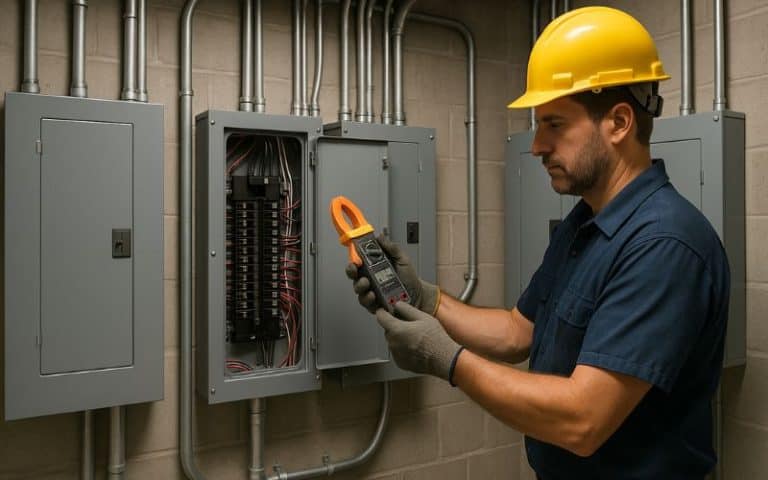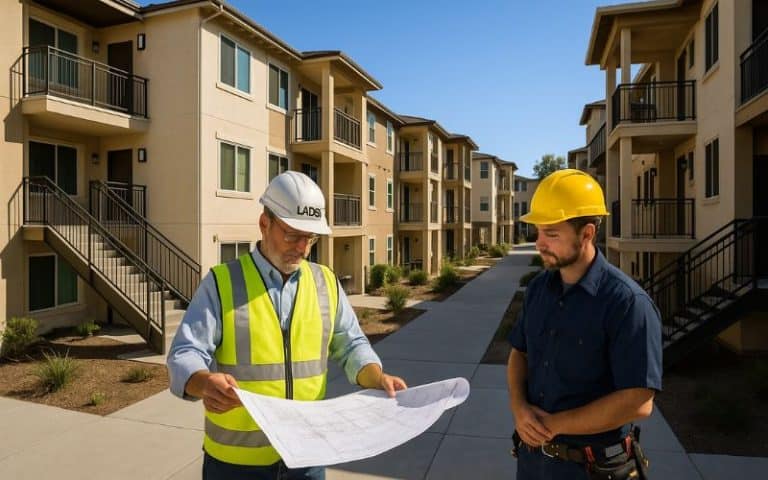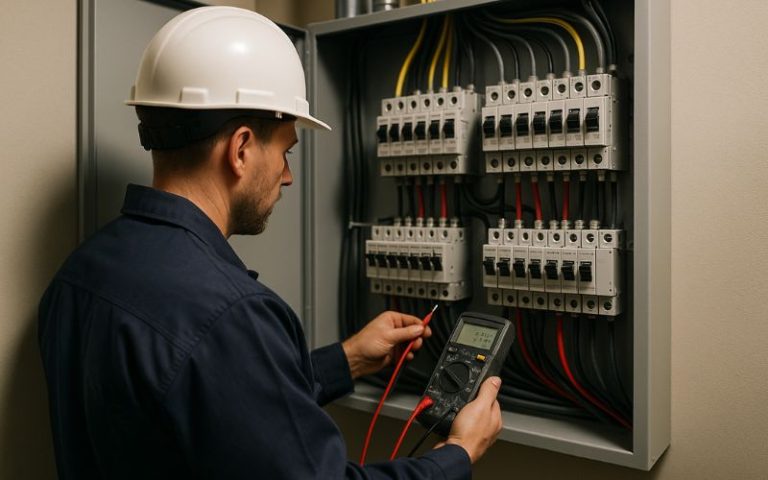
EV Charger Infrastructure for Apartment Buildings and Commercial Properties in Los Angeles
Los Angeles is at the forefront of the electric vehicle (EV) revolution. With California’s ambitious zero-emission goals and the growing popularity of Tesla, Rivian, and other EVs, more tenants and commercial occupants expect convenient access to charging stations. For property managers and commercial building owners, providing EV charging isn’t just a luxury—it’s quickly becoming a competitive necessity.
Apartment residents increasingly prioritize EV-friendly buildings, and commercial tenants see charging stations as an amenity that supports both employees and customers. Additionally, Los Angeles city regulations and California’s statewide initiatives are steadily pushing property owners toward electrification, meaning that early adopters gain a strategic advantage.
However, installing EV charging infrastructure is not as simple as placing a few chargers in the parking lot. It requires careful electrical planning, permitting, and in many cases, panel or service upgrades. In this guide, we’ll break down why EV charging is essential for property value, the steps involved in building a reliable system, and how RG Electric helps Los Angeles properties meet this growing demand.
Why EV Charger Infrastructure Matters for Property Managers
A Competitive Amenity for Multi-Unit and Commercial Properties
In a competitive rental and commercial market, amenities can make or break tenant decisions. For residential property managers, offering EV charging can attract eco-conscious renters and reduce tenant turnover. Commercial properties, including office complexes, retail centers, and mixed-use developments, also benefit—charging stations provide value to both employees and customers.
Forward-thinking property owners are treating EV chargers like other must-have amenities, similar to Wi-Fi or secure parking. Buildings that lack this feature risk being perceived as outdated, especially as more tenants make the switch to electric vehicles.
Supporting California’s Clean Energy Goals
California’s push for electrification is no longer optional. Statewide mandates and Los Angeles building codes are gradually steering property owners toward clean energy infrastructure. For example, new construction often requires a percentage of parking spaces to be EV-ready. Existing properties that upgrade voluntarily can get ahead of future regulations while enhancing their marketability.
Boosting Property Value and Revenue Opportunities
Adding EV charging stations doesn’t just meet tenant expectations—it can also increase property value. Properties that advertise EV-ready infrastructure appeal to a broader market, and some commercial sites can generate revenue by offering paid public charging.
Even for multi-unit residential buildings, implementing a shared charging strategy can create new revenue streams, offsetting installation costs over time.
Planning EV Charger Infrastructure for Your Property
Installing EV charging stations requires more than picking a few spots in the parking lot. Successful implementation begins with careful planning that addresses electrical capacity, future scalability, and compliance with Los Angeles and California regulations.
Assessing Your Electrical Capacity
Before any chargers can be installed, a licensed electrician must evaluate your property’s current electrical system. Most multi-unit and commercial buildings were not originally designed to support high EV charging loads. Without a proper assessment, you risk overloading existing panels or creating unsafe conditions.
An evaluation typically includes:
- Reviewing your main service panel and sub-panels for available capacity.
- Performing load calculations to determine how many chargers can safely operate.
- Identifying whether a panel upgrade or new sub-panel is required.
- Considering future demand to avoid costly repeat installations.
Many properties, especially older buildings, require electrical panel upgrades or additional circuits to support even a modest number of chargers. Planning for growth upfront can save significant time and money.
Choosing the Right Charger Types and Locations
There are several types of EV chargers, each with different speed, cost, and power requirements:
- Level 1 Chargers: Slowest option; typically for personal garage or overnight use.
- Level 2 Chargers: Most common for multi-unit and commercial properties; balance speed and cost.
- DC Fast Chargers: High-speed options typically used for public or commercial fleets; require substantial electrical upgrades.
Placement is equally important. Chargers should be located for easy access and minimal cord length, ideally near existing electrical rooms or panels to reduce installation complexity and cost. For larger properties, a phased approach—starting with the most accessible spaces and expanding later—is often the most efficient strategy.
Navigating Permits and LADBS Compliance
In Los Angeles, installing EV chargers often requires permits through the Los Angeles Department of Building and Safety (LADBS). This process ensures that installations meet current codes for safety, grounding, and load management.
Partnering with a licensed electrician like RG Electric streamlines the process, as we handle:
- Load calculations and capacity analysis
- Permit applications and plan submissions
- Coordination with city inspections
By addressing these factors early, property managers can avoid delays, reduce risk, and ensure a smooth path from planning to activation.
Installation, Costs, and Long-Term Management
Planning is only the first step. Once your property is ready for EV charger installation, the real work begins. A smooth installation process requires coordination between your electrician, property management team, tenants, and the city of Los Angeles.
Preparing for Installation
Before any equipment is installed, RG Electric conducts a site walk-through to confirm charger placement, conduit routing, and safety clearances. This step minimizes surprises during installation and ensures compliance with LADBS codes.
Key considerations include:
- Conduit Routing: How wiring will reach the chargers without creating tripping hazards or violating code.
- Parking Logistics: Whether spaces need to be reserved or restriped for EV use.
- Power Shutdowns: Communicating with tenants about any temporary power interruptions.
A well-planned installation minimizes tenant disruption while ensuring long-term safety and reliability.
Understanding Installation Costs
Costs for EV charging infrastructure vary widely depending on your property’s needs. Factors include:
- Number and type of chargers (Level 2 vs. DC fast charging)
- Distance from electrical panels to parking spaces
- Need for panel upgrades or new sub-panels
- Trenching, conduit, and protective bollards for outdoor chargers
While upfront costs can be significant, property owners often recover expenses through tenant billing, public charging fees, or increased rental value. Some projects may also qualify for LADWP or federal incentives, which RG Electric can help you navigate.
Long-Term Management and Maintenance
EV charging stations require ongoing attention to remain reliable and profitable. A proactive management plan should include:
- Regular inspections: Checking for wear, loose connections, and weather-related damage.
- Load monitoring: Ensuring chargers don’t exceed your property’s electrical capacity.
- Software updates: For networked chargers that allow payment tracking and access control.
- Tenant communication: Establishing clear policies for charger use, billing, and etiquette.
By combining strategic installation with long-term planning, property managers can transform EV charging from a one-time project into a sustainable amenity that serves tenants and boosts property value.
Why Partnering with RG Electric Makes EV Infrastructure Simple
Installing EV charging stations in Los Angeles commercial and multi-unit properties isn’t a weekend project. It requires a partner who understands the electrical demands, city codes, and the long-term impact on your property. That’s where RG Electric comes in.
Expertise from Start to Finish
We do more than just install chargers—we handle every step of the process. From the initial load assessment and permit applications to final inspection and activation, our team ensures that your EV infrastructure is safe, compliant, and built to last. Our familiarity with LADBS requirements saves property managers from the headaches of failed inspections or costly delays.
Solutions Tailored to Your Property
Every building is unique, and EV charging solutions should be too. RG Electric creates a plan that matches your current electrical capacity while preparing for future growth. Whether you need a single Level 2 charger for a small lot or a scalable system for a multi-unit complex, we’ll design a solution that maximizes safety, efficiency, and convenience.
Protecting Your Investment and Reputation
Adding EV charging isn’t just about staying competitive—it’s about protecting your property from risk. Poorly installed or unmanaged chargers can overload circuits, cause outages, and damage tenant trust. By partnering with RG Electric, you get professional-grade installation, clear documentation, and ongoing support to keep your investment secure.
A Partner for the Future of Electrification
EV adoption in Los Angeles is only accelerating, and properties that are EV-ready today will have a clear advantage tomorrow. By working with RG Electric, you gain a partner committed to future-proofing your property and keeping your tenants satisfied.
Don’t wait for tenants or city regulations to catch you off guard. Fill out the form on this page or call (323) 521-5131 to schedule a consultation with RG Electric. We’ll help you plan, install, and maintain an EV charging system that sets your property apart.
Disclaimer: Always consult a licensed electrician like RG Electric before performing electrical work. All services are completed to LADBS code and with proper permits.









